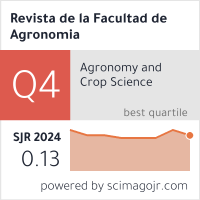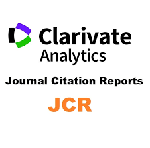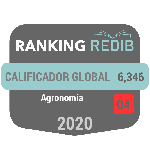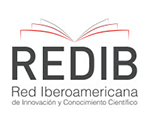Soil characteristics under different crops in mountain environments in Pamplona, Norte de Santander
Abstract
Agricultural intensification in mountain regions can alter soil quality and compromise its ecosystem functionality. Accordingly, this study evaluated the influence of land use on the physical, chemical, and biological properties of soils in agricultural and forest systems located in the Monteadentro district, municipality of Pamplona, Norte de Santander. During the 2019 rainy season, five land-use types were analyzed: strawberry, pea, tree tomato, pasture, and natural forest. In 1,000 m² plots, composite soil samples were collected at 0–10 cm depth to determine texture, volumetric water content (VWC), bulk density (BD), pH, electrical conductivity (EC), total organic carbon (TOC), and soil basal respiration (SBR). Both univariate and multivariate statistical analyses were applied (ANOVA, Kruskal–Wallis, correlations, and PCA). The results showed that land use significantly affected soil properties. Forest soils exhibited more favorable conservation conditions, with higher TOC content (2.8 %) and lower BD (0.7 g·cm-3), in contrast to agricultural soils, which presented higher BD, lower VWC and TOC, and higher SBR, likely associated with more labile organic substrates and organic matter degradation. Principal Component Analysis identified two main gradients: a physical–textural gradient (clay, VWC, EC, sand) and a biochemical–structural gradient (silt, pH, TOC, SBR), which differentiated land-use systems according to their degree of disturbance. These findings emphasize the need to implement conservation-oriented management strategies and regular soil monitoring in order to preserve soil functionality in mountain ecosystems.
Downloads
References
Alef, K., & Nannipieri, P. (1995). Methods in applied soil microbiology and biochemistry (340 p.). Academic Press.
Almendros, G., & González-Pérez, J. A. (2025). Soil organic carbon sequestration mechanisms and the chemical nature of soil organic matter—A review. Sustainability, 17(15), 6689. https://doi.org/10.3390/su17156689
Blake, G. R., & Hartge, K. H. (1986). Bulk density. In A. Klute (Ed.), Methods of soil analysis. Part 1. Physical and mineralogical methods (2nd ed., Agronomy Monograph No. 9, pp. 363–382). American Society of Agronomy—Soil Science Society of America.
Climate-Data.org. (2024). Clima: Pamplona. Recuperado el 28 de junio de 2025, de https://en.climate-data.org/south-america/colombia/norte-de-santander/pamplona-50220/
Coca-Salazar, A., Cornelis, J.-T., & Carnol, M. (2021). Soil properties and microbial processes in response to land-use change in agricultural highlands of the Central Andes. European Journal of Soil Science, 72(6), 2395–2409. https://doi.org/10.1111/ejss.13110
Cotrufo, M. F., Ranalli, M. G., Haddix, M. L., Six, J., & Lugato, E. (2019). Soil carbon storage informed by particulate and mineral-associated organic matter. Nature Geoscience, 12(12), 989–994. https://doi.org/10.1038/s41561-019-0484-6
Cruz Villamizar, D. V., Rodríguez Ospino, P. P., Castellanos González, L., & Césped Novoa, N. E. (2022). Validación de una tecnología en producción limpia de fresa a pequeña escala en la finca Sol Vida del municipio de Pamplona, Norte de Santander. Ciencia y Tecnología Agropecuaria, 7(1), 3–18. https://doi.org/10.24054/cyta.v7i1.2769
Ewunetu, T., Selassie, Y. G., Molla, E., Admase, H., & Gezahegn, A. (2025). Soil properties under different land uses and slope gradients: Implications for sustainable land management in the Tach Karnuary watershed, Northwestern Ethiopia. Frontiers in Environmental Science, 13, 1518068. https://doi.org/10.3389/fenvs.2025.1518068
Farjana, S., Park, I. S., & Choi, J. M. (2024). Macro-elements in liquid fertilization influence differently in occurrence and growth of runner plants in strawberry propagation. Korean Journal of Horticultural Science & Technology, 43(1), 108–118. https://doi.org/10.7235/HORT.20250018
Flórez Mogollón, D. A., & Ochoa, A. (2022). Diagnóstico de Buenas Prácticas Agrícolas y Ambientales en los sistemas productivos de papa y durazno de tres veredas del municipio de Chitagá, Norte de Santander. Ciencia y Tecnología Agropecuaria, 7(1), 19–27. https://doi.org/10.24054/cyta.v7i1.2776
Gao, H., Yan, C., Liu, Q., Ding, W., Chen, B., & Li, Z. (2019). Effects of plastic mulching and plastic residue on agricultural production: A meta-analysis. Science of the Total Environment, 651, 484–492. https://doi.org/10.1016/j.scitotenv.2018.09.105
Gardner, W. H. (1986). Water content. In A. Klute (Ed.), Methods of soil analysis. Part 1. Physical and mineralogical methods (2nd ed., Agronomy Monograph No. 9). American Society of Agronomy, Soil Science Society of America.
Gee, G. W., & Bauder, J. W. (1986). Particle-size analysis. In A. Klute (Ed.), Methods of soil analysis. Part 1. Physical and mineralogical methods (2nd ed., pp. 383–411). American Society of Agronomy, Soil Science Society of America. https://doi.org/10.2136/sssabookser5.1.2ed.c15
González-Pedraza, A. F., Méndez Ortega, A. J., & Quesada Vergara, V. (2023). Respuesta del cultivo de arveja (Pisum sativum L.) a la aplicación de abonos orgánicos en el municipio Pamplona, Norte de Santander. La Granja: Revista de Ciencias de la Vida, 37(2), 29–40. https://doi.org/10.17163/lgr.n37.2023.07
Huf dos Reis, A. M., Pires, L. F., & Armindo, R. A. (2024). New empirical-point pedotransfer functions for water retention data for a wide range of soil texture and climates. International Soil and Water Conservation Research, 12(6), 855–867. https://doi.org/10.1016/j.iswcr.2024.01.001
IGAC, Instituto Geográfico Agustín Codazzi. (2012). Estudio general de suelos y zonificación física de tierras del departamento Norte de Santander. Imprenta Nacional. https://www.igac.gov.co/es/catalogo/estudio-general-de-suelos-y-zonificacion-de-tierras-de-norte-de-santander
McLean, E. O. (1982). Soil pH and lime requirement. In A. L. Page (Ed.), Methods of soil analysis. Part 2. Chemical and microbiological properties (2nd ed., pp. 199–224). American Society of Agronomy, Soil Science Society of America. https://doi.org/10.2134/agronmonogr9.2.2ed.c12
Mitsuta, A., Lourenço, K. S., Gonçalves de Oliveira, B., de Assis Costa, O. Y. N., Cantarella, H., & Kuramae, E. E. (2025). Soil pH determines the shift of key microbial energy metabolic pathways associated with soil nutrient cycle. Applied Soil Ecology, 208, 105992. https://doi.org/10.1016/j.apsoil.2025.105992
Moya-Gutiérrez, A. J., Torres-Peña, J. A., & Contreras-Martínez, M. (2020). Site characterization using geophysical and geotechnical prospecting. Case study main road North Central Trunk (National Route 55) at Km 68 + 500 in the Municipality of Pamplona, North of Santander, Colombia. Revista Boletín de Ciencias de la Tierra, 48, 30–45. https://doi.org/10.15446/rbct.n48.85411
Pardo-Plaza, Y. J., Paolini Gómez, J. E., & Cantero-Guevara, M. E. (2019). Biomasa microbiana y respiración basal del suelo bajo sistemas agroforestales con cultivos de café. Revista U.D.C.A Actualidad & Divulgación Científica, 22(1), e1144. https://doi.org/10.31910/rudca.v22.n1.2019.1144
R Core Team. (2023). R: A language and environment for statistical computing (Versión 4.3.1) [Software]. R Foundation for Statistical Computing. https://www.r-project.org/
Rodríguez, Y., Osorio Torres, N. C., Castellanos, L., & Perez, Y. (2024). Antagonistas comerciales para el manejo de enfermedades fúngicas del cultivo de fresa (Fragaria x ananassa Duch.), en el municipio de Pamplona, Norte de Santander. Ciencia y Tecnología Agropecuaria, 9(1), 8-15. https://doi.org/10.24054/cyta.v9i1.2952
Shi, H., Jiang, L., Tan, X., Gan, F., Xia, Y., Li, W., Xu, X., Yan, Y., Fan, Y., & Pu, J. (2025). Changes in vegetation types alter soil respiration under the erosion and deposition topography in karst trough valley. CATENA, 255, 109027. https://doi.org/10.1016/j.catena.2025.109027
Singh, A. P., Singh, S. K., Rai, S., & Kumar, M. (2020). Soil carbon dynamics in relation to soil surface management and cropping system. En P. K. Ghosh, S. K. Mahanta, D. Mandal, B. Mandal, & S. Ramakrishnan (Eds.), Carbon management in tropical and sub-tropical terrestrial systems (pp. 181-204). Springer. https://doi.org/10.1007/978-981-13-9628-1
Villamizar Quiñonez, C., Cancino Escalante, G. O., & Cancino, S. E. (2024). Los aspectos biofísicos de la provincia de Pamplona, Norte de Santander, Colombia. Universidad de Pamplona. https://doi.org/10.24054/seu.78
Visconti-Moreno, E. F., & Valenzuela-Balcázar, I. G. (2019). Impacto del uso del suelo sobre la estabilidad de agregados y su relación con el carbono orgánico en dos pisos altitudinales en Los Andes de Colombia. Agronomía Colombiana, 37(3), 263-273. https://doi.org/10.15446/agron.colomb.v37n3.77601
Westman, C. J., Hytönen, J., & Wall, A. (2006). Loss-on-ignition in the determination of pools of organic carbon in soils of forests and afforested arable fields. Communications in Soil Science and Plant Analysis, 37(7), 1059–1075. https://doi.org/10.1080/00103620600586292
Ylagan, S., Brye, K. R., Ashworth, A. J., Owens, P. R., Smith, H., Poncet, A. M., Sauer, T. J., Thomas, A. L., & Philipp, D. (2023). Relationships among apparent electrical conductivity and plant and terrain data in an agroforestry system in the Ozark Highlands. Agrosystems, Geosciences & Environment, 6(8), e20414. https://doi.org/10.1002/agg2.20414
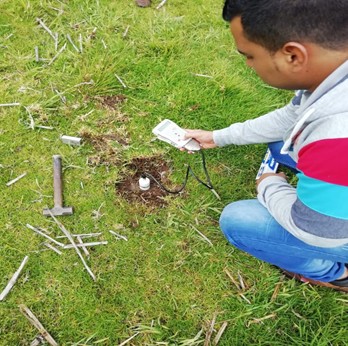
Copyright (c) 2025 Ana Francisca González-Pedraza, Steve Sandoval, Juan Carlos Escalante

This work is licensed under a Creative Commons Attribution-NonCommercial-ShareAlike 4.0 International License.
